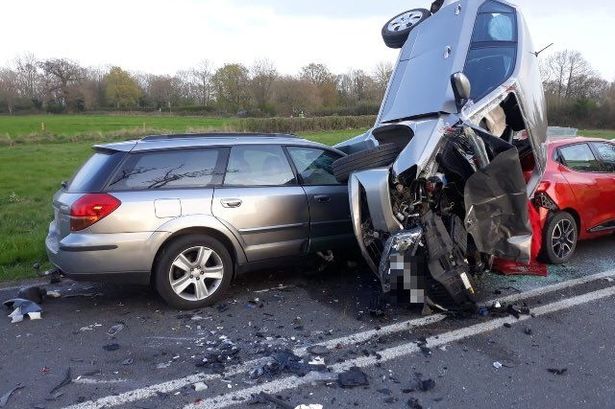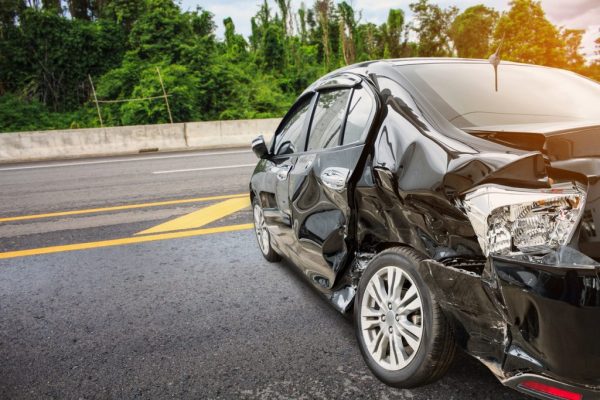In the realm of vehicular safety, the importance of attentive, informed driving cannot be overstated. Every year, countless incidents occur on our roadways due to a lack of awareness or adherence to basic driving principles. From understanding the fundamental traffic rules to ensuring regular vehicle maintenance, from mastering defensive driving techniques to minimizing distractions, each one plays a crucial role in avoiding unfortunate and often fatal accidents.
This discussion aims to highlight these key areas and provide practical tips to enhance driving safety and prevent potential mishaps. While the topic may seem common, you might be surprised to discover some nuances and overlooked aspects that could significantly alter the way you approach driving. For an in-depth look into specific risks and guidance, The Boss Magazine offers valuable insights into the 15 most dangerous accident-prone roads in Birmingham, Alabama.
Table of Contents
Understanding Basic Traffic Rules
How well do we comprehend the fundamental traffic rules which serve as the lifeblood of road safety? A critical aspect of this understanding is Traffic Signals Interpretation. Traffic signals guide the flow of vehicles and pedestrians to improve safety and efficiency on roads. Misinterpreting these signals can lead to catastrophic accidents, hence the need for clear comprehension.
In every traffic system globally, the three-color coded signals – red, amber, and green – have universal meanings. The red signal prohibits any traffic from proceeding, the green signal allows traffic to proceed in the direction denoted, if it is safe to do so, and the amber signal serves as a warning of imminent change of signal.
Another crucial rule to comprehend is the Pedestrian Right of Way. This rule stipulates that motorists must yield to pedestrians crossing the roadway within any marked or unmarked crosswalk. Specifically, this means when traffic control signals are not in place or not in operation, the driver of a vehicle is obligated to yield to a pedestrian. Understanding and respecting these rules significantly reduces road accidents and ensures the safety of all road users.
Importance of Regular Vehicle Maintenance
Regular vehicle maintenance is an essential aspect of safe driving, contributing significantly to the overall safety and efficiency of road transportation. The preventive maintenance benefits are numerous and include improved vehicle reliability, higher operational safety, and reduced repair costs.
Scheduled servicing importance cannot be overstated. Regularly servicing your car ensures that any hidden faults are detected and rectified before they can escalate into major problems. This not only saves you from sudden breakdowns but also prolongs the life of your vehicle.
Furthermore, regular maintenance boosts the efficiency of your vehicle, leading to better fuel economy. This not only saves you money but also minimizes your carbon footprint, contributing to environmental preservation.
Moreover, a well-maintained vehicle offers better performance and ensures a smoother ride. This not only enhances your driving experience but also keeps you and other road users safe.
Role of Defensive Driving Techniques
In the realm of road safety, mastering defensive driving techniques plays a pivotal role in reducing the risk of accidents and ensuring the well-being of both the driver and other road users. These techniques include key elements such as roadway positioning and crash prevention techniques, which can significantly improve the driver’s ability to predict potential risks and respond accordingly.
Roadway positioning involves maintaining a safe distance from other vehicles and staying within the appropriate lane. This reduces potential conflicts with other drivers, and offers more reaction time to unexpected situations. Roadway positioning also includes being aware of blind spots and ensuring clear visibility at all times. particularly crucial for individuals involved in a motorcycle accident as it helps them avoid potential collisions and remain safe while driving.
Crash prevention techniques are fundamental aspects of defensive driving. These include anticipating the actions of other drivers, understanding the limits of your vehicle, adjusting to weather and road conditions, and reducing distractions. By predicting potential hazards, drivers can adjust their speed, change lanes, or take other necessary actions to prevent a crash.
Defensive driving techniques are not just about responding to immediate threats, but also about proactively maintaining safety. By practicing these techniques, drivers can significantly reduce their risk of accidents, ensuring a safer journey for all.
The Impact of Distractions on Driving
Shifting focus to a critical concern on the roads, distractions significantly undermine the safety of driving, often leading to severe accidents and fatalities. The advent of technology, despite its numerous benefits, has propagated a major source of distraction for drivers: Cellphone usage. Whether it’s texting, calling, or using navigation apps, cellphone usage adversely affects drivers’ concentration, causing Attention Diversion from the road.
Let’s consider some common distractions and their impact on driving safety:
| Distraction | Impact on Driving Safety |
| Cellphone Usage | Increases the risk of collision due to lack of focus. |
| Eating or Drinking | Causes momentary distraction, potentially leading to accidents. |
| Using Navigation Systems | Diverts attention from the road, increasing accident risks. |
| Adjusting Music or Climate Controls | Leads to split-focus driving, raising collision probability. |
Addressing these distractions is crucial to enhancing road safety. By abstaining from cellphone usage while driving and minimizing other forms of distractions, drivers can ensure their full attention is dedicated to maneuvering their vehicle safely, thereby significantly reducing the likelihood of accidents.
Tips to Handle Tough Driving Conditions
While minimizing distractions is a crucial measure for safe driving, it is equally important to equip oneself with strategies to handle challenging driving conditions effectively. These conditions may include heavy rain, snow, fog, or even high winds. Here are some key tips to navigate these tough driving conditions:
- Weather adaptations: Adjust your driving style according to the weather. For example, during heavy rain or snow, reduce your speed and increase the distance between your car and the vehicle in front. Use your headlights in foggy conditions to increase visibility.
- Skid control: Understanding how to control a skid can be a lifesaver. If your car begins to skid, stay calm, don’t slam on the brakes, and steer in the direction you want the car to go.
- Vehicle maintenance: Regular servicing and maintenance of your vehicle is crucial. Ensure your tires, brakes, and windshield wipers are in good condition.
- Plan your journey: Check the weather forecast before you set off and plan your route accordingly. If conditions are particularly bad, consider postponing your trip.
Frequently Asked Questions
What Steps Should I Take if I Am Involved in a Car Accident?
If involved in a car accident, ensure safety, document the incident thoroughly, exchange information with involved parties, notify authorities, and promptly initiate insurance claims. Consider legal advice if necessary to protect your rights and mitigate potential liabilities.
How Does Alcohol or Drug Use Impact Driving Abilities?
Alcohol or drug use severely impacts driving abilities by causing impaired judgment and slowed reactions. This can result in dangerous situations on the road, putting both the driver and others at significant risk.
What Is the Correct Way to Use Safety Features Like Seat Belts and Airbags?
Proper use of safety features involves consistent seatbelt maintenance and understanding airbag functionality. Seatbelts should be fastened securely, and airbags must be routinely checked to ensure optimal performance during unexpected incidents.
How Can I Ensure the Safety of Child Passengers in My Vehicle?
Ensuring the safety of child passengers requires proper child seat installation according to manufacturer’s guidelines. Additionally, providing appropriate car toys can keep children occupied, reducing distractions and contributing to overall vehicle safety.
What Legal Implications Can Arise From a Car Accident?
Car accidents can lead to various legal implications including insurance claims, liability determination, personal injury lawsuits, or even criminal charges if negligence or violation of traffic laws is proven. It’s crucial to understand your legal obligations post-accident.
Conclusion
Understanding and adhering to traffic rules can significantly reduce car accidents. Maintaining vehicles regularly is another crucial aspect of safe driving. Employing defensive driving techniques and minimizing distractions are also important in preventing accidents. Additionally, handling tough driving conditions with caution is essential for safe driving. Collectively, these practices can enhance road safety, safeguard lives, and minimize the adverse economic and social impact of car accidents. Thus, the importance of these safe driving tips cannot be overstated.





